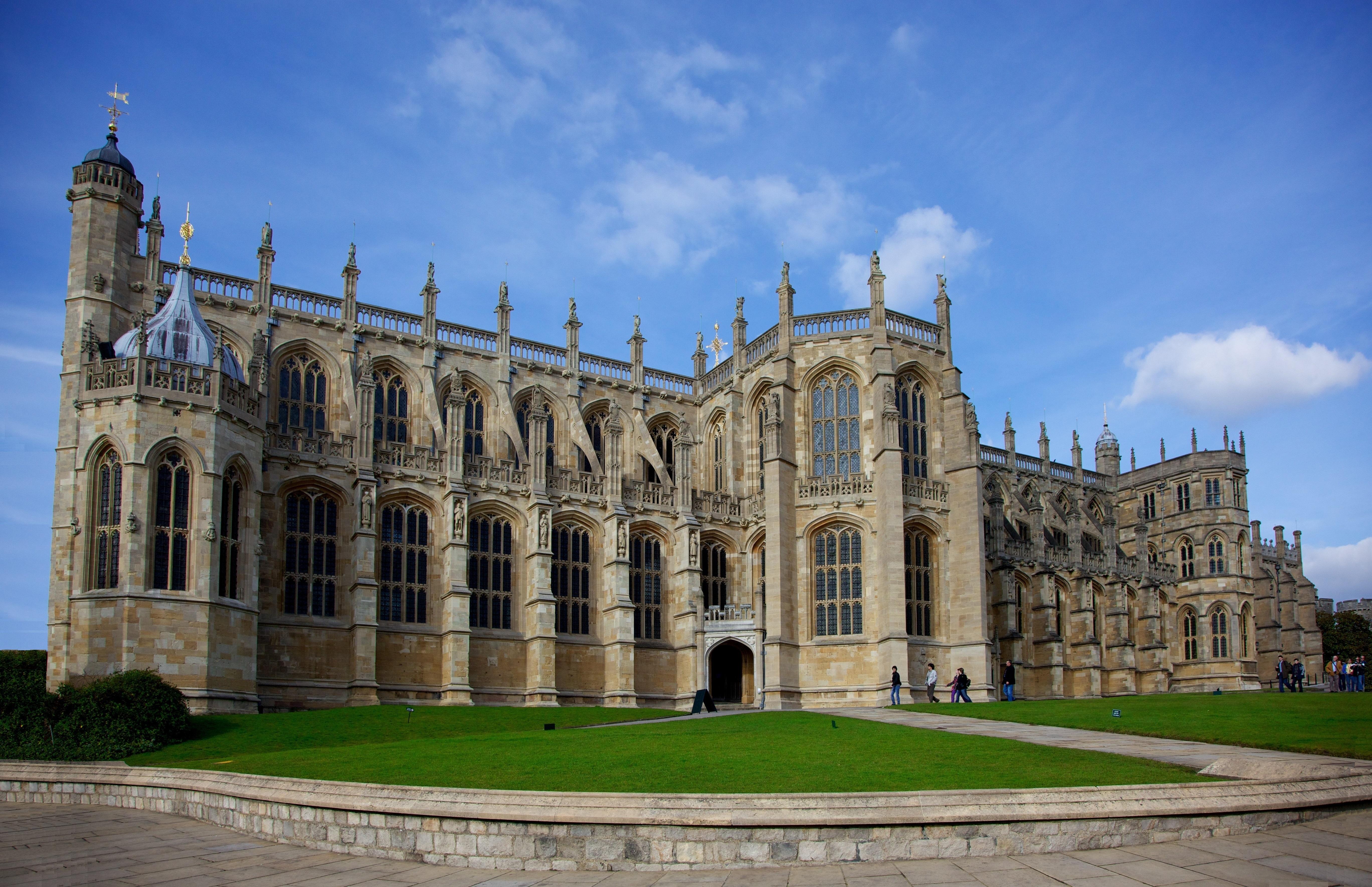St Laurence
Slough, Berkshire
Discover famous tombs including Sir William Herschel, research family history, find peace and quiet and more.

St George’s Windsor has a rich and varied history. The connection between the Royal Family and St George’s Chapel is a strong one with members of the Royal Family have been baptised, married and buried here.
Windsor, Berkshire
St George's Chapel is the place of worship at Windsor Castle in England, United Kingdom. It is both a Royal Peculiar and the Chapel of the Order of the Garter.
The castle chapel was established in the 14th century by King Edward III and began extensive enlargement in the late 15th century. It has been the location of many royal ceremonies, weddings and burials. The chapel is located in the Lower Ward. Windsor Castle is a principal residence for Queen Elizabeth II and its chapel is the planned burial site for the queen.
In 1348, King Edward III founded two new religious colleges: St Stephen's at Westminster and St George's at Windsor. The new college at Windsor was attached to the Chapel of St Edward the Confessor which had been constructed by Henry III in the early 13th century. The chapel was then rededicated to the Blessed Virgin Mary, St Edward the Confessor and St George the Martyr. Edward III also built the Aerary Porch in 1353–1354.
The chapel was a popular destination for pilgrims during the late medieval period. The chapel was purported to contain several important relics: the bodies of John Schorne and Henry VI of England and a fragment of the True Cross held in a reliquary called the Cross of Gneth.
The chapel suffered a great deal of destruction during the English Civil War. Parliamentary forces broke into and plundered the chapel and treasury on 23 October 1642. Further pillaging occurred in 1643 when the 15th century chapter house was destroyed, lead was stripped off the chapel roofs, and elements of Henry VIII's unfinished funeral monument were stolen. Following his execution in 1649, Charles I was buried in a small vault in the centre of the choir, which also contained the coffins of Henry VIII and Jane Seymour. A programme of repair was undertaken at St George's Chapel following the Restoration of the monarchy. The reign of Queen Victoria saw further changes made to the architecture of the chapel. The east end of the choir was reworked in devotion to Prince Albert.
On the roof of the chapel, standing on the pinnacles, and also on pinnacles on the sides, are 76 heraldic statues representing the Queen's Beasts, showing the Royal supporters of England. They represent 14 heraldic animals: the lion of England, the red dragon of Wales, the panther of Jane Seymour, the falcon of York, the black bull of Clarence, the yale of Beaufort, the white lion of Mortimer, the greyhound of Richmond, the white hart of Richard II, the collared silver antelope of Bohun, the black dragon of Ulster, the white swan of Hereford, the unicorn of Edward III and the golden hind of Kent.
Slough, Berkshire
Discover famous tombs including Sir William Herschel, research family history, find peace and quiet and more.
Cippenham, Berkshire
St Andrew’s is special, it is the first church in Britain specifically designed to be shared by the Anglican and Roman Catholic communities.
Stoke Poges, Buckinghamshire
The churchyard here is famously said to have inspired Thomas Gray to write his Elegy in a Country Churchyard in 1750, and he is buried close to the east wall of the church.